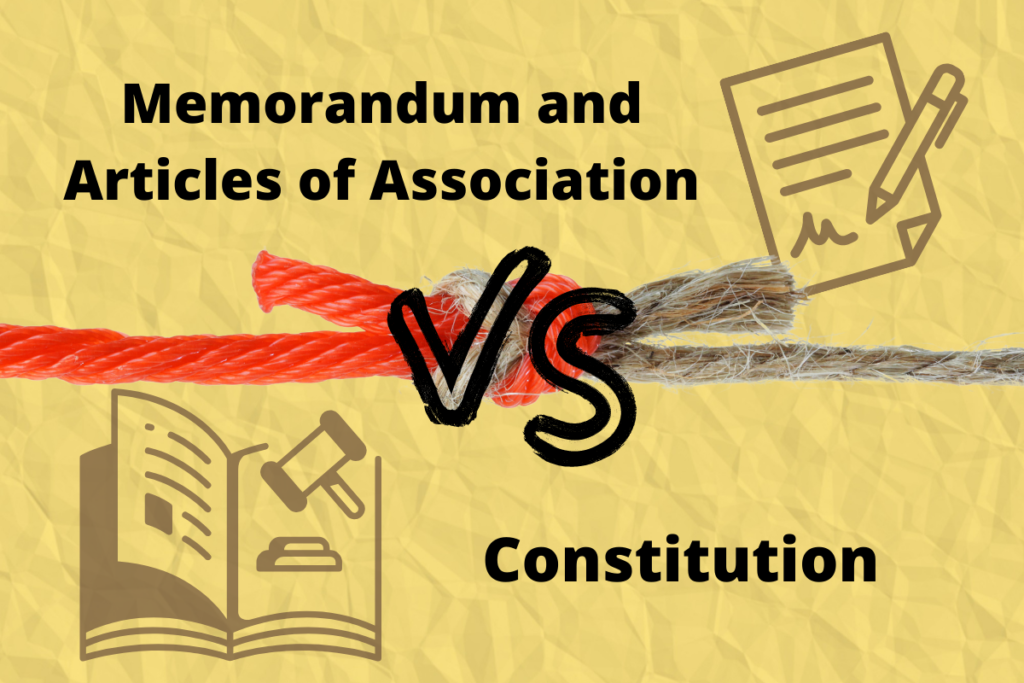Articles
Learn how to start and properly operate a business in Malaysia. These articles are also useful for new business owners.
Customer Testimonials
Hear what our valuable clients have to say about their experience with Bossboleh.
BB e-Learning School
Education should be accessible to all. This platform breaks barriers with curated video lessons at your fingertips.
Memorandum and Articles of Association (M&A) & Constitution in Malaysia

What is a Company’s Constitution?
- It is essentially a contract that specifies the business’s interactions with each of its members, directors, and company secretary.
- It includes functions such as power, responsibilities, roles, major activities (if applicable), allotment of shares, dividend payment, share transfer, appointment/re-election/removal of directors, and meeting behaviour, and others.
- However, it is not necessary to have a company constitution in Malaysia. Shareholders have the option of adopting a constitution at the time of incorporation or after the company has been registered. When the company has more than one (1) shareholder, it is best to adopt.
Purpose of Company’s Constitution
The following are some of the reasons why companies should have a constitution:
- The company’s management is governed by a regulated set of internal regulations, which gives directors and shareholders peace of mind.
- The members’ wishes may be reflected in the Constitution.
- The Constitution gives directors and shareholders more flexibility and certainty when dealing with government, banks, and licencing issues.

When should a company constitution be adopted?
These are the five situations in which having a company constitution is a good option.
1) When the number of directors or shareholders is even.
Majority votes are used to make several decisions in a board or shareholder meeting. When there are an even number of voters, a ‘deadlock’ situation might occur when exactly half of the directors or shareholders vote for a different outcome. This issue can be prevented if voting rules are established.
For example:
- If there is a tie in the vote, the meeting chairperson will have a casting vote.
- A shareholder’s representative cannot sit as the meeting’s chairperson.
- For the board meeting to occur, all directors must be present.
2) When you want to go beyond the Act’s protections for shareholders
The shareholders’ liability and rights are outlined in Part III, Division II, Subdivision I of the Companies Act 2016, which states that shareholders are liable for the amount of paid-up capital they contributed and that they can hold management reviews to make recommendations to the board of directors at any time. To preserve the rights of shareholders, further restrictions could be included in the constitution.
For example:
- A shareholder who is unable to attend the meeting in person may nominate a representative to vote on his or her behalf.
- If a written resolution is not carried by a majority of votes within 14 days after its distribution, it is considered rejected.
- If less than 80% of shareholders attend shareholder meetings, no vote should be done.
3) When two or more companies form a joint venture
Two or more companies serve as corporate shareholders in a joint venture. Because corporate shareholders are not individuals, the constitution can include additional provisions to protect the companies’ rights.
For example:
- Each of the joint venture’s corporate shareholders shall appoint a certain number of directors.
- The shares of the joint venture’s corporate shareholder will be redeemed if one of the companies is struck off or wound up.
- The joint venture is limited to conducting business in line with the constitution.
4) When your company wants to raise funds from investors
The Companies Act 2016, Part III, Division I, Subdivision I, states that without a constitution, your company can only issue ordinary shares, which offer shareholders ownership in the company. Ordinary shareholders have the power to vote in shareholder meetings and appoint or dismiss directors. A constitution is required if your company wishes to raise capital through the issuance of preference shares, which have no voting rights.
For example:
- 40% of the total shares shall be preference shares.
- The company can either redeem or not redeem preference shares.
- How often and how much should dividends be paid to shareholders.
- Shareholders who own preference shares have the same voting rights as ordinary shareholders.
5) When you wish to control how the Board operates
The Companies Act 2016’s Third Schedule (Section 212) specifies the board’s default procedures, which include voting rights for directors, how a board resolution can be passed, the creation of committees and managing directors, and so on. Because the procedures outlined are basic, you can use a constitution to create more precise regulations for how the Board operates based on your company’s needs.
For example:
- A majority vote of directors is required to pass a board resolution.
- Unless he is dismissed from the board, a specific director is chosen as the permanent chairperson of board meetings.

What is Memorandum and Articles of Association?
- Suruhanjaya Syarikat Malaysia (SSM) requires the Memorandum and Articles of Association to be submitted when a company is formed.
- A company’s memorandum of association, often known as the memorandum, is a legal document that establishes and governs the company’s interaction with the outside world.
- A company’s constitution is made up of its articles of association, often known as the articles.
- Simply described, the Articles are a set of rules and regulations that regulate a company’s internal management and business operations.
The following is the essential information in the Memorandum of Association:
- The name of the company (The name of a private company must finish with the words “Sendirian Berhad,” while the name of a public company must end with “Berhad.”) ;
- The location of the company’s registered office ;
- Object clauses – The nature of the company’s business that planned to be carried out ;
- The members’ liability is limited ;
- The nominal amount of the authorized share capital with SSM.
Latest updates about Memorandum and Articles of Association (M&A)
- Existing companies that were already registered under the previous law can use Section 619(3) of the Companies Act 2016 to keep their M&A effective and enforceable.
- The company may opt to cancel the Constitution in its entirety or change specific articles. If the existing firm wishes to abolish the existing M&A and not have a specific constitution, it must pass a resolution to that effect.
- In that situation, the company, each director, and each member will have the rights, powers, duties, and obligations stated in the Companies Act 2016 (Section 31(3)).

M&A vs. Constitution
Memorandum and Articles of Association
- Every company must have a Memorandum and Articles of Association, according to the Companies Act of 1965. (M&A). The M&A are now referred to collectively as the Constitution under the Companies Act of 2016.
- A firm, on the other hand, may decide not to have a Constitution or to create one based on its business needs. The company, its directors, and each member of the company will have the rights, powers, duties, and obligations outlined in the Act in this scenario.
- Except to the extent that such rights, powers, duties, and obligations are permitted to be modified in accordance with the Act and are so modified by the company’s Constitution, if a company has a Constitution, the company, its directors, and each member of the company shall have the rights, powers, duties, and obligations set out in the Act. In any case, any provision of the Constitution that is in conflict with the Act is unconstitutional.
Until the company acts on the following, the existing M&A becomes the company’s Constitution :
- Remove its existing M&A – A company that chooses to remove its existing M&A will not have a Constitution and will be subject to the Act’s restrictions ; OR
- Amend its present M&A or establish a new Constitution that is in compliance with the Act.
Constitution
- Because the Constitution is the primary document detailing a company’s processes and procedures, any clause that is left out of the Constitution could result in ambiguity and complications.
- The right people would be able to make choices and solve concerns like succession planning, signatures, and technology use if the Constitution was written in accordance with the Act and the business’s principal goal.
- Your company’s growth and development are built on the foundation of a well-written Constitution.
As you create your company’s constitution, keep the following points in mind :
- What should the structure of your company’s decision-making be?
- How will you specify the rights and duties of your employees?
- What are your company’s specific rules and regulations?
- Are you aware of the latest on the 2016 Companies Act?
Want to know more about starting a Sdn Bhd? What’s the best way to start one, and what should you be mindful of? Register and find out in our upcoming webinar!


Are you ready to form your Sdn Bhd with Malaysia’s #1 award-winning Online Company Secretary? Contact us now via WhatsApp @018-767 8055
